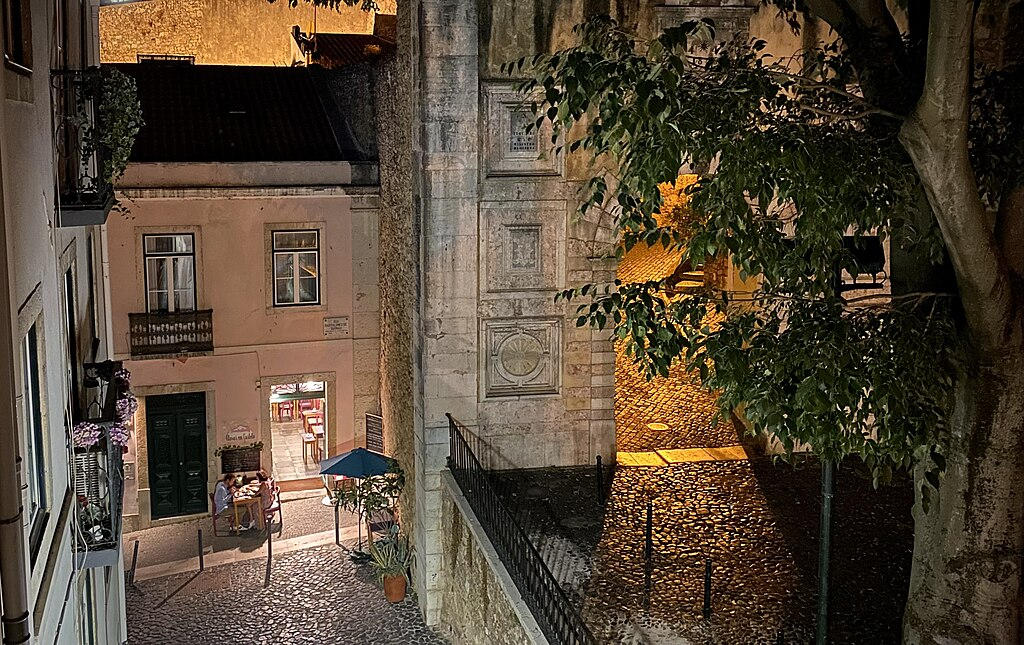During the era of Moorish rule, Alfama encompassed the entire city, serving as a bustling hub of activity. As the city expanded westward, Alfama became home to fishermen and the less privileged, solidifying its reputation as the neighborhood of the working class. Despite its humble beginnings, Alfama has managed to retain its unique character throughout the ages.
Not even the devastating 1755 Lisbon earthquake could dismantle Alfama's intricate labyrinth of narrow streets and intimate squares. The district emerged from the ruins with its charm intact, offering visitors a glimpse into a bygone era. In recent years, efforts have been made to restore the neighborhood, breathing new life into its old houses and welcoming the emergence of new restaurants where the haunting melodies of Fado, a traditional Portuguese music genre, can sometimes be heard.
As you stroll through the district, you'll encounter historical landmarks, such as the Lisbon Cathedral, which dates back to the 12th century, and the São Jorge Castle perched on the hilltop, offering panoramic views of the city. Once a royal residence until the early 16th century, the castle provides panoramic views of the city, allowing visitors to appreciate the captivating panorama below. Nestled within the slopes of Alfama are several terraces, known as miradouros, offering breathtaking vistas of Lisbon. Miradouro de Santa Luzia, located near the church of the same name and built over remnants of the Moorish city walls, and Miradouro das Portas do Sol (Gates of the Sun) are two such viewpoints that provide a glimpse into the district's architectural splendor. Additionally, the Museum of Decorative Arts, housed in a 17th-century mansion, is a cultural gem worth exploring.
Since 2012, Alfama has been a part of the freguesia (parish) of Santa Maria Maior, further cementing its place within Lisbon's historical tapestry. Today, Alfama continues to thrive, attracting visitors from around the world who seek to immerse themselves in its rich history, wander its narrow streets, and experience the authentic charm that has defined the district for centuries.
Alfama is the epitome of authenticity, and wandering through its streets feels like stepping back in time. The district has retained its traditional character, with locals still going about their daily lives. As you meander through the cobblestone streets, you'll pass by quaint houses adorned with colorful tiles, neighborhood cafes, and small shops selling handicrafts and local products. You might even hear the melancholic strains of Fado music drifting from a nearby tavern, adding to the district's nostalgic ambiance.
Lisbon.vip Recommends
Alfama is a haven for food enthusiasts, with a plethora of traditional restaurants, taverns, and bakeries. Indulge in authentic Portuguese cuisine, savoring dishes like bacalhau (salted cod), grilled sardines, and caldo verde (kale soup). Don't forget to pair your meal with a glass of local wine or a shot of ginjinha, a cherry liqueur that is a local favorite. Be sure to explore the district's lively markets, such as the Feira da Ladra flea market, where you can find unique antiques, vintage treasures, and traditional handicrafts.
Alfama truly comes alive during festivals and celebrations. One of the most famous is the Festa de Santo António, held in June, where the streets of Alfama are adorned with colorful decorations, and locals gather for lively street parties, music, and dancing. It's an incredible opportunity to experience the district's vibrant energy and immerse yourself in Lisbon's cultural traditions.
One of the best ways to truly experience Alfama is to explore it on foot. Allow yourself to wander aimlessly, discovering hidden squares, charming alleyways, and unexpected viewpoints. Engage with the friendly locals, who are always happy to share stories and recommendations. Lose yourself in the enchanting ambiance, absorb the sights, sounds, and scents, and create your own unique memories in this magical district.
Alfama is a neighborhood that captures the essence of Lisbon, blending history, culture, and authenticity into a truly unforgettable experience. With its picturesque streets, historical landmarks, delicious cuisine, and vibrant atmosphere, it's no wonder that Alfama is a must-visit for travelers seeking to immerse themselves in the heart and soul of Lisbon. So, lace up your walking shoes, embrace the spirit of adventure, and get ready to be captivated by the alluring Alfama district.
Map View



